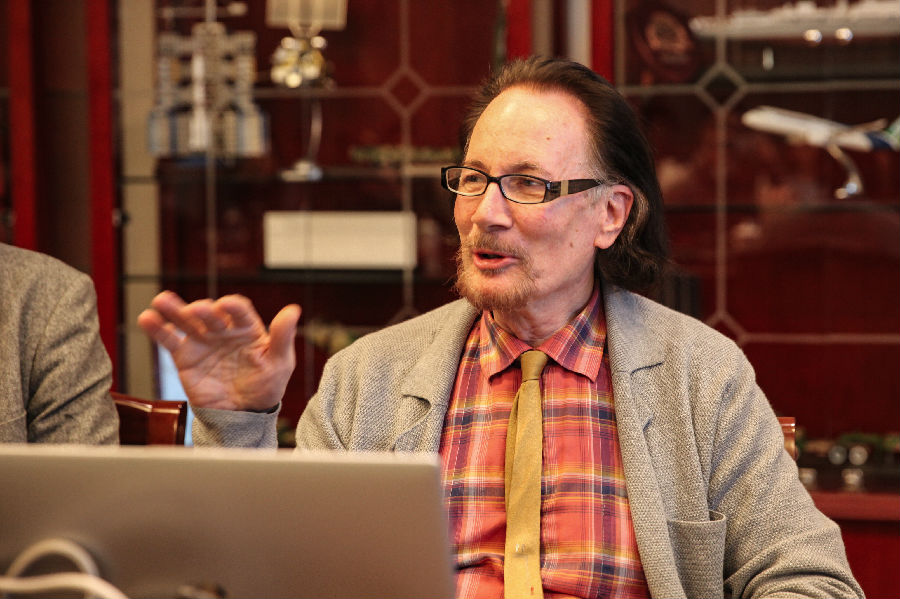Talk| Museums and Their Publics: The Smithsonian National Air and Space Museum in Transition
2018年12月05日
Dr. Martin Collins, curator from Smithsonian National Air and Space Museum (NASM), gave a talk on "Museums and Their Publics: The Smithsonian National Air and Space Museum in Transition" to QLM staff on December 4.

Dr. Martin Collins is curator of the civilian applications satellites collection at NASM. His primary research interests are post-World War II history of science and technology and their relation to the United State’s role in the world. His recent research and curatorial practice focus on globalization in the science and technology and how that concept is incorporated in his exhibition.
NASM is beginning a complete renovation which entails a re-do of all their exhibits in the museum. This comes naturally as a result of building deterioration, but the context of this transition includes not only the re-consideration of what “national” means to a museum but also the changing understandings of the museum in relation with diverse groups of publics. The recent museum studies literature and visitor study research also provides an understanding for the overall renovation. Research comes to findings that museum visitor experience nowadays extends from physical visits to an “ephemeral, constructed relationship” that visitors correlate with museums in any attempted behaviour they desire. This change of visitor-ship requires the museum team to reach out to their audiences in alternative and innovative ways.
Key elements and challenges that NASM curatorial teams face when they consider to re-do all the exhibits are:
1. How to balance the museum’s expertise & research oriented staff with a more general public’s visit interests?
2. In what ways do they tell the facts and stories of contemporary aviation and space technologies which is a critically global initiative, but with materials and objects created and produced mainly in the United States?
3. To what extent does NASM adapt to the change of visitor-ship , especially in terms of younger generations and their views of space science based on fictional TV and movies?
